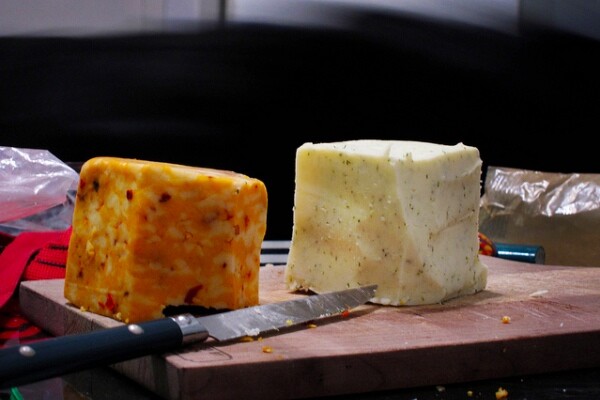What Wisconsin's Cheese Fight Means For All Of Us

Photo:djlindalovely/Flickr/Creative Commons License
Over the past year and change, the FDA has been trying to implement the new Food Safety Modernization Act by taking a closer look at how foods are made in our country. Ostensibly, this is to protect us from food poisoning. As someone who is currently in the midst of his own nasty bout of food poisoning, this is good news. However -- and there's seemingly always a however when you're talking about government agencies -- the safety methods that the FDA is applying are quickly becoming bad news.
So far, the FDA has tried to force brewers to throw out their wet grain instead of allowing them to give it away to neighbors, and nearly wiped your favorite farmers' market of its fruit and veggies section. But last week, they did something more drastic: They tried to mess with cheese.
And if there's one thing you don't do, it's mess with America's cheese.
Let's start this story at the beginning. The very beginning.
Thousands of years ago, cheesemakers got the idea to use wooden shelves in order to age cheese. Why? Most likely the cheapness and availability of wood. But along the way, it became the norm for artisanal cheesemakers and (according to said artisanal cheesemakers, at least) gave cheeses the specific type of moisture regulation needed in order to create the flavor compositions we all love.
The FDA, though, believes it also gives the cheese something else:
The porous structure of wood enables it to absorb and retain bacteria, therefore bacteria generally colonize not only the surface but also the inside layers of wood. The shelves or boards used for aging make direct contact with finished products; hence they could be a potential source of pathogenic microorganisms in the finished products.
Their worry was the possibility of the wood harboring listeria monocytogenes, the bacteria that leads to a rough illness and occasionally lingers in cheese. (This is why pregnant mothers are told to stay away from eating soft cheeses.) This possibility is directly refuted by history; at least, if you believe the Executive Director of the Wisconsin Cheese Makers Association, who claims there has never been an outbreak attributed to wood boards. But the FDA didn't want to take chances, so they issued a decree to change the cheese-making industry as we know it.
And people did not enjoy this news.
Tumblrs were launched in response. Facebook was inundated with links to stories about the government taking away our cheese. The Twitter hashtag #SaveOurCheese trended everywhere. The Wisconsin Governor even chimed in. The publicity got to the point where the FDA had to address the issue:
The agency's regulations do not specifically address the use of shelving made of wood in cheese-making, nor is there any FSMA requirement in effect that addresses this issue.
Meaning, we're all back to normal. No harm, no foul. The wood-aging process will continue being used as before. Almost as if some enterprising soul at the FDA hopped into a time machine and righted the wrongs from the past week.
Now, there's a negative way to look at this, and that's by looking at the back and forth as proof the FDA doesn't know what it's doing. But today at least, I choose a more optimistic way of looking at this whole charade. Maybe this mess is progress.
The fact that the creation and subsequent backing away from the policy took less than a week to accomplish -- and took place without congressional votes, voter initiatives, or all sorts of red tape -- is an indication we're heading in the right direction. It may have taken a loud and boisterous public uproar to occur before the FDA changed their mind, but they did change it. And quickly.
Which is to say: If you're involved in the food industry in any capacity, pay attention to the FDA. If they try to pull anything funny, make a big stink about it. The blueprint is out there: Facebook, Tumblr, Twitter, news outlets everywhere. You are the safeguard to keep the FDA from overstepping their boundaries. And we're all waiting to help.


